New Designs for Enhancing Crew Safety on Offshore Rigs
Offshore oil and gas exploration is one of the most dangerous working conditions in the world, and the crew safety on offshore rigs has become of paramount matter of concern. To meet the growing regulatory requirements and the ever-growing complex offshore operations, safety engineers and designers are continually innovating to develop new designs that significantly enhance the crew’s safety on offshore rigs. This article focuses on the recent advancements in design strategies that aim to protect workers and ensure operational resilience on offshore platforms.
Traditional Methods for Crew Safety on Offshore Rigs
| Category | Traditional Safety Method |
| Evacuation Systems | Lifeboats and standard lifeboats are manually launched using davit systems |
| Accommodation Safety | Steel living quarters of basic design with only a little blast resistance and fireproofing. |
| Fire Protection | Sprinkler and manual fire extinguisher systems that are activated by smoke or heat |
| Gas Detection | Fixed-point gas detectors equipped with alarms that sound |
| Personal Safety Gear | Standard PPE: hard hats, goggles, gloves, and coveralls |
| Fall Protection | Guardrails fixed and safety harnesses in areas with potential hazards |
| Communication Systems | Internal communication via radio and satellite phones to make external contacts |
| Training and Drills | Regular fire drills and evacuation drills are conducted regularly |
| Lighting and Visibility | Halogen or fluorescent lighting and basic warning signs for emergency exits |
| Transport Safety (Helideck) | Basic non-slip coating and fire extinguishers for the helidecks |
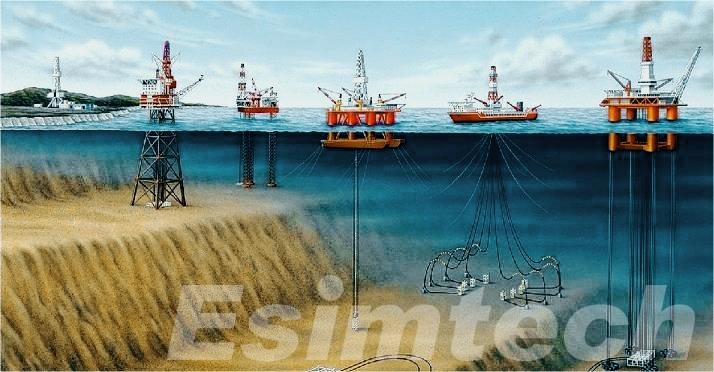
Challenges in Crew Safety on Offshore Rig
These challenges stem from the natural environment and inherent risks associated with offshore operations.
Harsh and Unpredictable Environmental Conditions
One of the biggest issues is the extreme and frequently unpredictable weather that can occur at sea. Massive waves, high winds, and severe storms could disrupt normal activities, destroy infrastructure, and even put lives in danger. Slippery decks, low visibility, and the violent movement of the sea can make incidents such as trips, slips, or falls more probable. In adverse weather, simple tasks could be dangerous, and emergency evacuations could be delayed or impossible.
Isolation and Limited Emergency Response
Offshore rigs are usually located further away from shore, making urgent medical aid or rescue efforts difficult. If there is an accident that causes serious injury or fire, or a blowout, the response time is often delayed to the point of being inconvenient. The isolation can also limit the accessibility of the medical staff and other equipment and can turn easily manageable events into life-threatening ones.
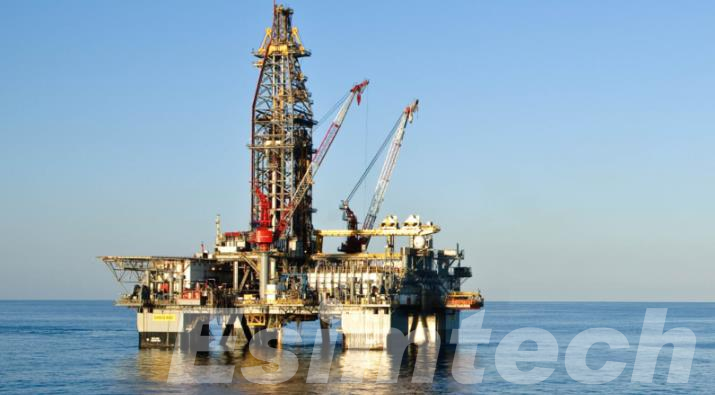
Exposure to Hazardous Materials and Processes
Crew members frequently work with high-pressure equipment including volatile hydrocarbons, including volatile hydrocarbons, as well as harmful chemicals. A small leak or mistake can swiftly escalate into a major catastrophe, such as fires, explosions, or exposure to chemicals. Despite the latest detection technology there is always the danger of accidental release remains an important safety issue.
Human Error and Fatigue
The length of shifts, the repetitive tasks, and the lack of recreation on offshore platforms can cause physical as well as mental exhaustion. Stress reduces concentration and reaction time and makes human errors more likely. In addition, stress and isolation can hinder judgment and result in mistakes in safety protocol, even in the hands of experienced workers.
Communication Barriers and Coordination Issues
Communication is essential during any crisis, but it isn’t always easy to accomplish when working offshore. The differences in language between international teams and technical jargon, as well as noisy environments, can create confusion. Uncertainty during crucial moments like an evacuation or system failure could lead to delays in responding and a higher risk.
Confined Spaces and Complex Layouts
Offshore rigs are constructed featuring narrow hallways and steep staircases, and cramped workspaces. The structural constraints make evacuation and navigation difficult, particularly during emergencies that involve gas leaks, fire, or equipment failure. The tightness of the surrounding environment can increase the risk of injuries and make quick escape more difficult.
Emergency Evacuation Difficulties
Procedures for emergency evacuation for offshore rigs are a challenge that requires coordination and speed, and an equivocal execution. Rescue pods as well as lifeboats could be difficult to access or launch in turbulent conditions. If the rig has been severely damaged, the traditional evacuation routes could be restricted, further compromising the situation.
Inadequate or Outdated Training
While the majority of offshore workers go through safety courses, it does not reflect the actual situations they face on the platform. Classroom instruction in the traditional sense and occasional exercises might not adequately equip crews for the intense and rapidly changing scenarios they may encounter. If they don’t receive regular, real-time training, a response’s effectiveness could be diminished.
Mental Health and Crew Well-being
Working from abroad often means prolonged absence from family members, small living spaces, and a lack of social interactions. These elements can cause anxiety, stress, and depression. Mental health issues can affect the level of alertness, decrease morale, and increase the chance of accidents. Crew well-being is a common problem for offshore rig safety.
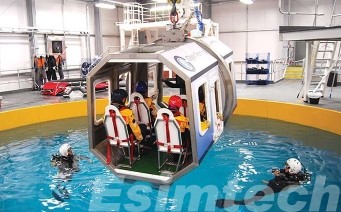
Innovative Design Solutions for Enhancing Crew Safety on Offshore Rigs
As offshore rig safety remains a top priority, the industry has witnessed the shift from reactive safety measures to proactive, tech-driven design solutions.
1. Smart Escape Systems
A major and important factor of offshore security is its capability to swiftly evacuate the personnel efficiently in the event of an emergency. Lifeboats of the past have been modernized with advanced escape systems, including lifeboats that are enclosed in modular pods equipped with GPS tracking, automated self-righting features, as well as climate control. These systems are able to be launched in extreme sea conditions. They are specifically designed to allow for extended life at sea, significantly increasing the odds of an effective rescue.
2. Blast-Resistant and Fireproof Living Quarters
Crew accommodations have changed from simple steel-walled structures into sophisticated units that provide high levels of security. Modern designs for accommodation incorporate blast-resistant materials as well as structural reinforcements capable of enduring high pressures from blasts. Smoke-resistant seals, fireproof coatings, as well as integrated HVAC systems that have harmful gas filtration make sure that living spaces are safe zones during dangerous events.
3. Wearable Smart Tech for Real-Time Safety Monitoring
Wearable technology has added an entirely new dimension to personal security monitoring. Wearable devices like smart helmets, wristbands, vests, or helmets are able to track the location of a worker as well as body temperature and heart rate as well as fatigue levels, and exposure to harmful gases. The data is sent in real-time to a centralized control room, which allows security teams to spot irregularities in the early stages and address dangers to the environment or health prior to them escalating.
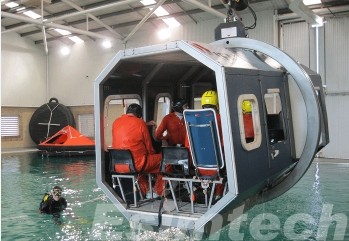
4. Next-Generation Fire and Gas Detection Systems
The detection of gas and fire is no longer dependent on fixed-point detectors only. Modern systems use laser-based and infrared detection techniques capable of detecting micro-leaks as well as heat signatures with high accuracy. They are paired with automated suppression systems, such as water mist or inert gas flooding, or foam dispensers, that are activated immediately when danger is identified to ensure the quick and effective containment of gas or fire leaks.
5. Ergonomic and Slip-Resistant Structural Design
Accidents resulting caused by slips, trips, and falls are a common occurrence on offshore drilling rigs. To reduce this risk, designers have developed anti-fatigue flooring, non-slip coatings, as well as improved handrails and stairway designs. Safety markings with high visibility and LED lights that are adaptive enhance hazard awareness and workers’ orientation in routine activities and emergencies.
6. Redundant and Resilient Communication Systems
Maintaining high-quality communication in the event of an emergency is crucial. Modern rigs have dual communication systems, which include wireless networks, hardwired nodes, and satellite connections. The systems are designed with redundancy in order to guarantee continuous communication even when one channel fails, which allows the coordination of evacuation efforts as well as live updates from support teams.
7. Safer Helideck Design and Access Protocols
Helicopter transportation is crucial to ensure the movement of offshore crews. To increase safety, the latest helideck designs incorporate non-slip surfaces, automatic foam firefighting dispensers, as well as improved lighting around the perimeter for low visibility conditions. Access zones are clear to prevent the risk of rotor wash and increase the efficiency of boarding.
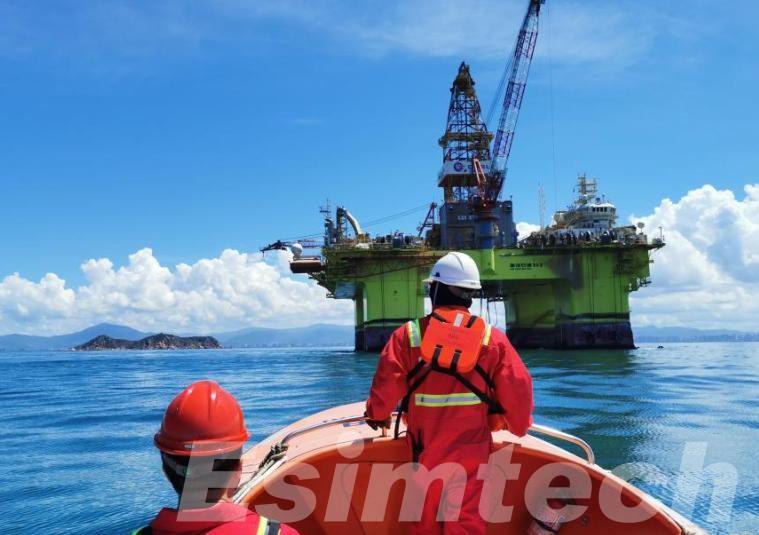
How Simulation Technology is Used for Enhancing Crew Safety on Offshore Rigs
Through the creation of realistic, immersive, and repeatable training environments, oil and gas simulation technology bridges the gap between the theoretical and the practical application.
Immersive Safety Training with Virtual Reality
Training is an essential element in offshore safety, and the advent of virtual reality(VR) emergency training simulation system has changed the way crews plan for high-risk situations. Training environments in VR simulate flame evacuations, explosions, and equipment breakdowns, offering people the chance to practice actions under real-life stress. This type of immersive training leads to more preparedness and faster response times during real events.

Realistic Emergency Response Training
Simulation technology allows crews to undergo high-risk emergency scenarios, such as gas leaks, blowouts and fires, or equipment failures–without the real-world consequences. Emergency training simulations are able to replicate real-world conditions of the rig, which include factors like night-time lighting, stormy weather, and operations in confined spaces. Through repeated exposure to real-life scenarios, crew members are taught to be calm, observe the correct procedure, and work effectively under stress.
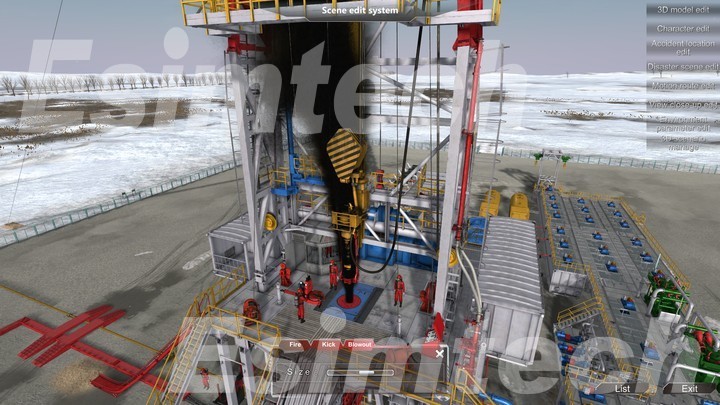
Customized Drills Based on Platform Configuration
Each offshore oil rig comes with a unique layout and a distinct set of operational risk factors. Tools for simulation are tailored to mimic the exact layout and equipment used on a specific platform. Safety teams can design training that is based on scenarios and that is specifically designed to address specific ways to escape, the safety mechanisms, and operational hazards that exist on the platform. This means that workers learn in conditions that are similar to their working environment, enhancing their situational awareness and decreasing the time to respond during real emergencies.
Human Factors and Decision-Making Under Pressure
One of the most significant benefits of simulation technologies is their capacity to pay attention to human behaviour and make decisions. In stressful situations, people are often challenged to make quick and precise judgments. Simulations test not just technical responses, but also leadership, communication, as well as psychological resilience. After every simulation, students receive feedback and analytics on their performance to identify their strengths and pinpoint areas of improvement.
Integration with Wearable and Monitoring Technology
Modern simulations usually include data from wearable safety devices. This allows trainers to track the heart speed, blood pressure levels, and reaction times throughout the training. These biometrics can provide valuable insight into how individuals handle stress, and can help improve both personal training plans and more general safety procedures.
Equipment Operation and Maintenance Training
Beyond the emergency, the use of simulation technology to teach personnel the proper operation of vital machinery, such as top drives, blowout prevention devices, cranes, and firefighting systems. Virtual models of this equipment permit crew members to test operational procedures and troubleshoot issues with no risk of damaging actual assets. This kind of practical experience improves confidence and reduces the chance of human error in actual operations.
Team-Based Scenario Exercises
Simulations encourage collaboration in training. Multi-user scenarios permit various crew members, such as medical personnel, drillers and control room operators, and rig managers, to work in a virtual setting. The team-based exercises aid in strengthening communications protocols, establishing roles and duties, and promoting the safety mindset of all crew members at all levels of operations.
Continuous Improvement Through Data Analytics
Simulation platforms typically have built-in analytics that track every move made during an entire session. Through the analysis of these records, the safety professionals can spot routine flaws, repeated errors, or areas of delayed responses. This method of analysis, based on data, helps improve training and gives practical insights to improve the safety procedures and standards for emergencies.
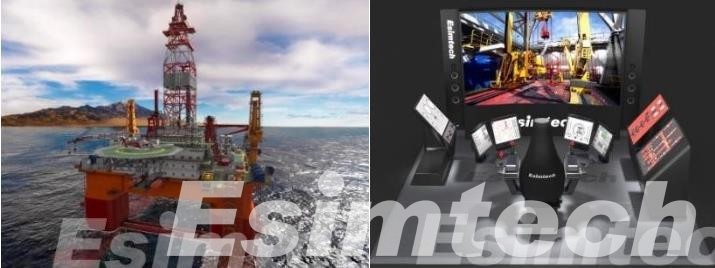
Summary
Offshore rig safety is no longer just about compliance, and it’s an important strategic goal that combines high-quality engineering with cutting-edge technology. With smart escape systems and wearable technology to immersive VR training and blast-proof housing designs, these new design innovations are reshaping the way offshore operations are conducted with a primary focus on proactive risk reduction and human-centered security. As the industry moves towards deeper waters and more remote operations, the integration of these safety enhancements will be crucial in protecting crew members and ensuring long-term viability for offshore exploration.
